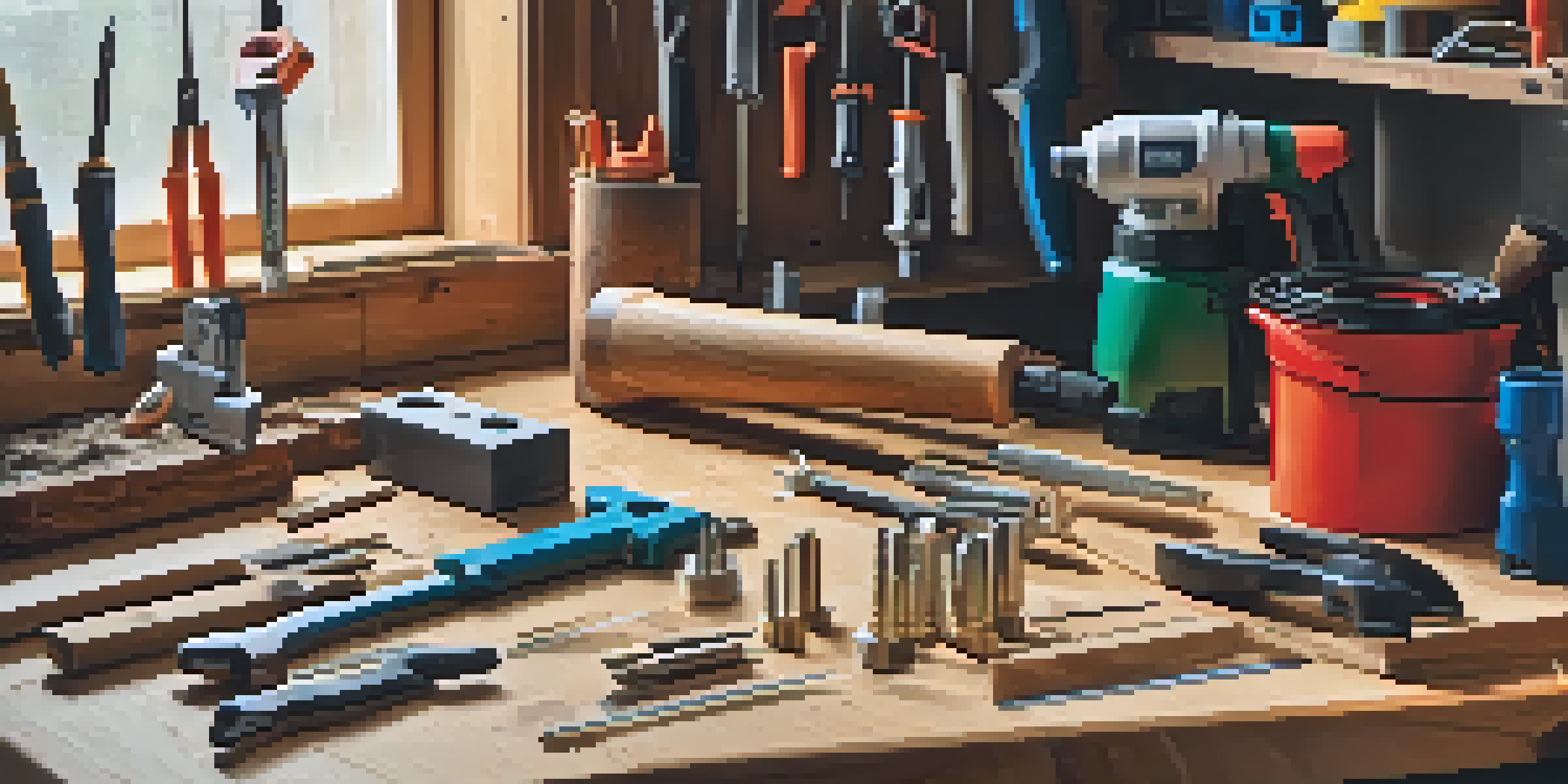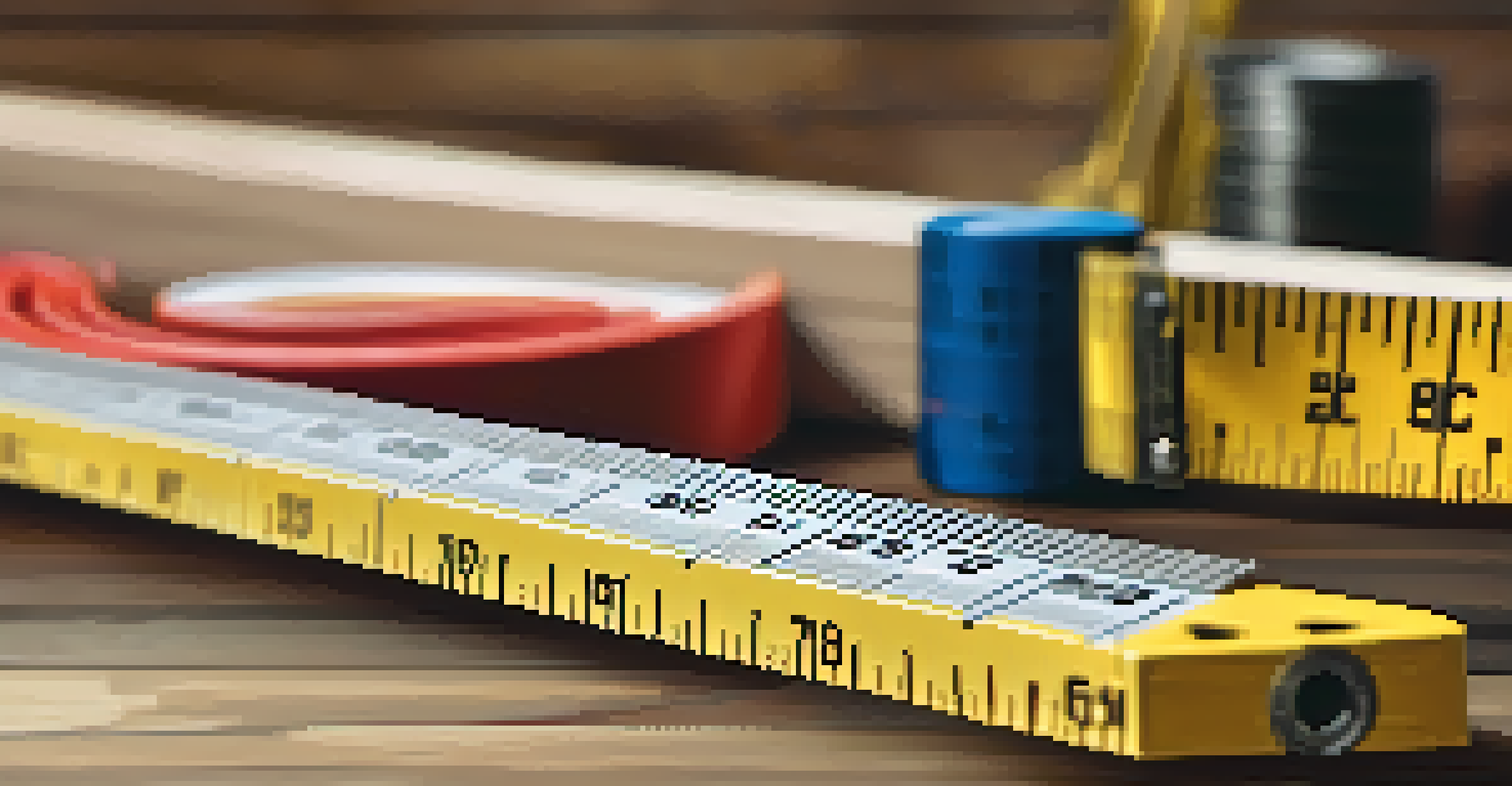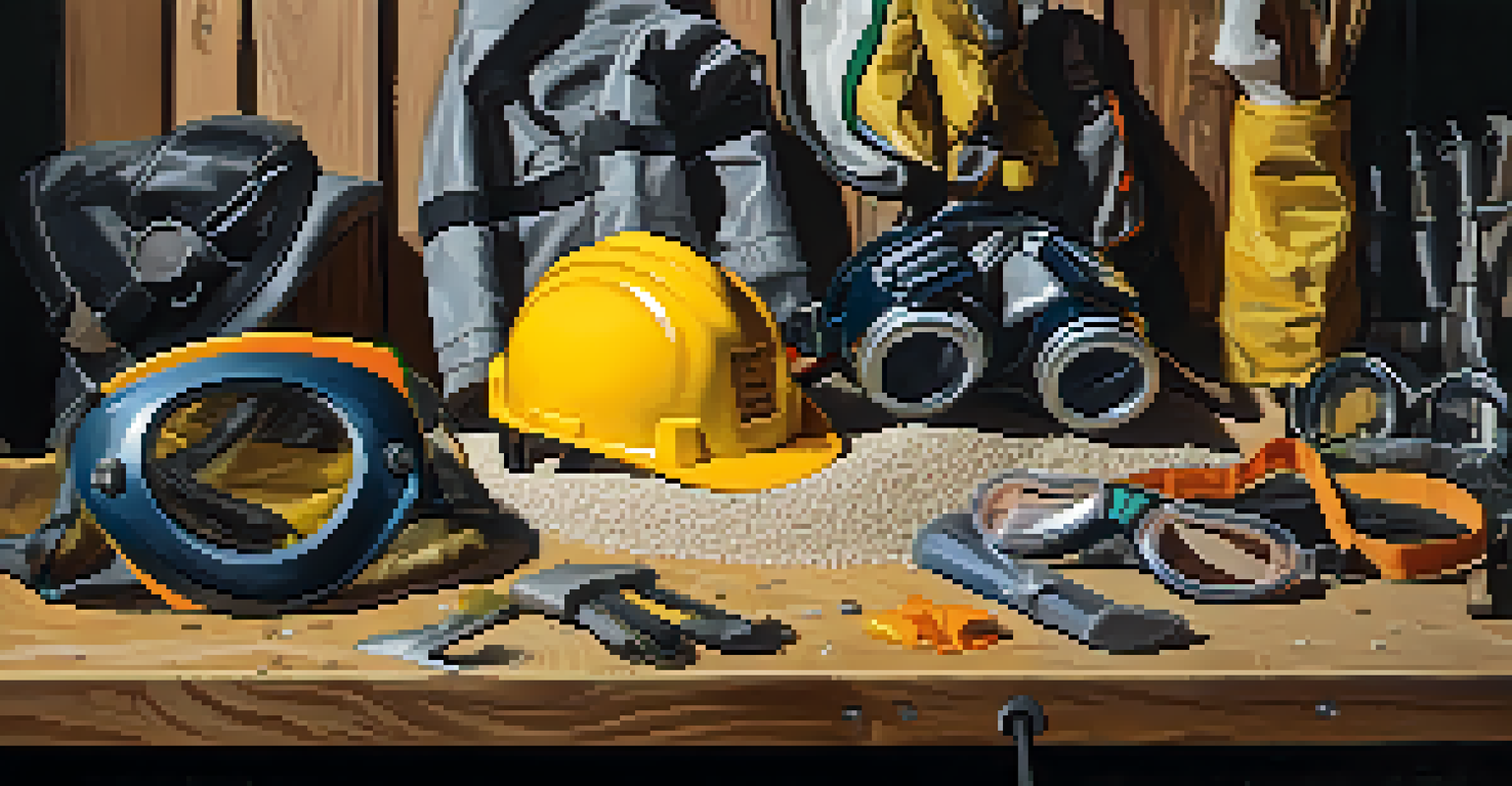Must-Have Tools for DIY Furniture Projects at Home

Basic Hand Tools Every DIYer Should Own
When embarking on DIY furniture projects, having the right basic hand tools is crucial. A good set typically includes a hammer, screwdrivers, and pliers. These tools are not just essential; they form the backbone of your toolkit, enabling you to tackle a wide range of tasks.
The best way to predict the future is to create it.
For example, a hammer is perfect for driving nails into wood, while screwdrivers allow for easy assembly of flat-pack furniture. Pliers can help with gripping, twisting, and cutting tasks. The simplicity of these tools makes them accessible for both beginners and seasoned DIY enthusiasts.
Investing in quality hand tools will not only make your projects easier but also enhance your overall experience. You'll find that having the right tools at hand can reduce frustration and increase your efficiency, making every project a little more enjoyable.
Power Tools That Make Life Easier
While hand tools are essential, power tools can significantly speed up your DIY projects. Items like a cordless drill, jigsaw, and sander can turn a long afternoon of work into a couple of hours. A cordless drill is particularly versatile, perfect for drilling holes and driving screws.

Using a jigsaw, you can easily cut out shapes and curves, allowing for more creative designs in your furniture. Meanwhile, a sander helps achieve that smooth finish that makes your pieces look polished and professional. These tools enable you to work with precision and speed, freeing up more time for creativity.
Essential Hand Tools for DIYers
Having basic hand tools like hammers, screwdrivers, and pliers forms the backbone of any DIY toolkit.
Investing in quality power tools not only enhances efficiency but also elevates the quality of your work. As you become more comfortable using these tools, you'll find your confidence growing, inspiring you to take on even more ambitious projects.
Safety Gear: Protecting Yourself While You Work
Safety should always be a priority when working on DIY furniture projects. A good set of safety gear, including goggles, gloves, and a dust mask, can save you from potential injuries. For instance, goggles protect your eyes from flying debris while cutting or sanding.
Measure twice, cut once.
Wearing gloves can prevent cuts and splinters, especially when handling raw materials. A dust mask is also essential when sanding or cutting wood, as it keeps harmful dust particles out of your lungs. Taking these precautions ensures a safer, more enjoyable DIY experience.
By investing in safety gear, you’re not just protecting yourself; you’re also setting a good example for others. Whether you're working alone or with friends and family, promoting safe practices is key to creating a positive and responsible DIY environment.
Measuring Tools: Getting Accurate Dimensions
Accurate measurements are the foundation of any successful furniture project. Essential measuring tools include a tape measure, square, and level. A tape measure allows you to take precise dimensions, ensuring that your pieces fit together seamlessly.
Using a square helps ensure that your cuts are straight and your corners are at right angles. Meanwhile, a level ensures that your furniture is balanced and stable, preventing wobbly tables or shelves. The phrase 'measure twice, cut once' is a mantra that every DIY enthusiast should embrace.
Importance of Safety Gear
Investing in safety gear such as goggles, gloves, and dust masks is crucial for protecting yourself while working on DIY projects.
With the right measuring tools, you can avoid costly mistakes and save time. The satisfaction of seeing your measurements translate into perfectly fitting pieces will make your DIY journey much more rewarding.
Finishing Tools for a Professional Look
To achieve that polished, professional finish on your furniture, you'll need a few finishing tools. Brushes, rollers, and spray guns can help apply paint or stain smoothly and evenly. A high-quality brush can make a world of difference in achieving a smooth coat without streaks.
Rollers are great for larger surfaces, while spray guns can provide a flawless finish and are especially useful for intricate designs. Additionally, don't forget about sandpaper for smoothing surfaces before finishing; it can elevate the final look of your project tremendously.
Investing time in the finishing process will enhance the visual appeal and durability of your furniture. A well-finished piece not only looks good but also stands the test of time, making your investment in tools and materials worth it.
Clamps: Keeping Everything in Place
Clamps are an often-overlooked but essential tool in any DIY toolbox. They hold pieces together securely while glue dries or while you work on assembly. Whether you're building a frame or attaching legs to a tabletop, clamps ensure that everything stays in place.
There are various types of clamps, including bar clamps and C-clamps, each serving different purposes. For instance, bar clamps can span larger distances, while C-clamps are perfect for smaller, tighter spaces. Using the right clamp can significantly improve the quality of your assembly.
Organized Workspace Boosts Efficiency
Creating an organized workspace with proper storage solutions significantly enhances your DIY experience and sparks creativity.
By utilizing clamps effectively, you can minimize errors and achieve precise alignments. This attention to detail will not only save you time but will also enhance the overall look and functionality of your finished furniture.
Storage Solutions for Your Tools and Materials
An organized workspace can greatly enhance your DIY experience. Investing in storage solutions like toolboxes, pegboards, and shelving units can help keep your tools and materials neatly arranged. Having everything in its place means you won't waste time searching for what you need.
Consider using a pegboard to hang frequently-used tools, making them easily accessible. Toolboxes can keep smaller items organized and protected, while shelving units can store larger materials and projects in progress. An organized workspace fosters a productive environment.

Creating a dedicated space for your DIY tools not only improves efficiency but also inspires creativity. With everything at your fingertips, you’ll feel more motivated to dive into your next project, knowing you have everything you need right where you want it.